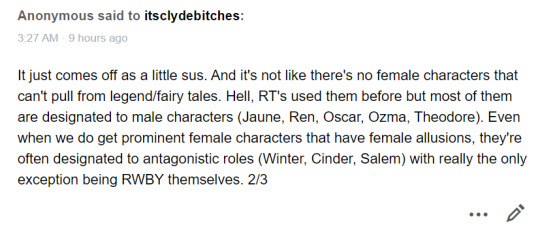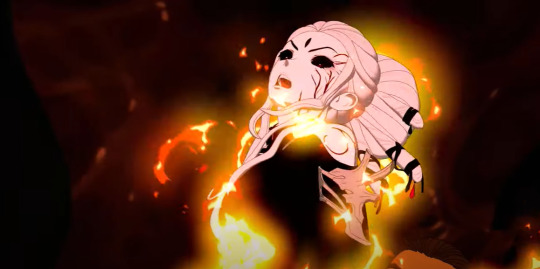#we have red and snow foxes and yet they never gave us fennecs and that is just Rude
Explore tagged Tumblr posts
Text
sib is dreaming of a minecraft savannah rework for some reason and the devs are fuckin around with the villagers and i just wish desert biomes got the same amount of love as the dozen different kinds of forests we have now
i want more variety and interest than a kindergartener's idea of what a desert looks like. i want rock formations and lizards and joshua trees, and rare micro-biomes full of flowers as homage to the spectacle of when it rains as applied to a game where time doesn't really pass, i want oasis sprouting next to bodies of water and sand dunes repeating endlessly so that it feels like you're being swallowed whole
desert update. please
#desert biomes just dont get any love bc most ppl who dont live in one think theyre lifeless and it Hurts#when the lava filled hell dimension has more life than the biome based off a real life one is </3#dont get me wrong i love the nether update its just an example#chatter tag#minecraft#we have red and snow foxes and yet they never gave us fennecs and that is just Rude#the kindergartener comment is maybe a bit ironic in hindsight#i was a magic school bus kid to the bone i Knew about desert ecosystems#much better than the average temperate climate adult anyway i think
3 notes
·
View notes
Note
Was planning on making this my own post, but I thought you would be more suited to discussing this sort of topic. Something I've noticed when it comes to the more prominent/important/strong female characters (Nora, Pyrrha, Penny, Robyn, Emerald, Sienna) is that RT often has the tendency of giving them masculine allusions (Thor, Achilles, Pinocchio, Robin Hood, Aladdin, Shere Khan) as if they are unable to stand on their own as characters unless they have that connection to a male character. 1/3


It is worth discussing! Yeah, I hesitate to call it a pattern just because, as you say, Team RWBY themselves are an exception to the rule — and as the title characters of the story, they’re a pretty big exception. We also have good women allusions turned into good women characters (Glynda with The Good Witch, May with Maid Marian) and bad women allusions turned into good women characters (Winter with The Snow Queen — I don’t think she was ever meant to enter full antagonist territory, but that’s another post). So it’s not just a matter of saying, “RWBY models their strong women after male inspirations and turns all female inspirations into male characters.” It’s not that simple. But the fact that it’s not simple doesn’t mean there’s nothing there to unpack because I definitely understand the feeling you’re pointing to, anon. Team RWBY feels like it has the most thought put into it in terms of changing up these allusions, specifically when it comes to subversion: the little girl in a red hood who previously needed a hunter’s protection has become the hunter herself, Belle overcomes both her Gaston and the now evil Beast, Snow White extracts herself from her own abusive situation (with a little help from the Dwarves still), and Goldilocks is no longer lost and in need of basic necessities, but can rather punch her way out of any establishment — like, say, a club. The execution of these themes aside (how Adam was handled, turning Jacques’ arrest into a joke, etc.), there’s a commonality here that works. Or at least, it works for me. Yet when we expand the allusions past our title team, things get... very messy. That’s when we start to hit on these concerns.
I’d say the problem stems primarily from that lack of thought, not the act itself of turning women characters into men or vice versa. Meaning, as I’ve said in the past, RWBY’s use of allusions is terribly unreliable nowadays, and that’s not just in terms of plot expectations like, “Why did Penny have to become a flesh girl because Pinocchio, but Ironwood didn’t stay good because Tin Man?” It also includes these questions of why these changes were made and what sort of messages they send. As you lay out, why are so many of our heavy hitters — the most talented huntress, the lightning-immune smasher, the Maiden android, etc. — based on men? Why are many of the effeminate and “weaker” men — Jaune the untrained, Ren the emotional councilor, Oscar the kid who wants to talk it all out — based on women? Again, I don’t intend to sling any hard accusations, but rather to point out what’s likely a subtle, unconscious bias. To provide another example, I’ve seen talk recently about how RT (again, unconsciously) depicts the faunus, where all the good characters have culturally established “good” animal features and all the bad character have culturally established “bad” features. It’s cat ears, rabbit ears, sheep ears, monkey tails, dog tails, and beautifully changing skin color vs. scorpion tails, spiderwebs, bull horns, tiger ears, bat wings, and crocodile scales. Is it a perfect 1:1 divide? No, Ghira has panther claws and Fennec has fox ears, but there’s enough there for us to go, “RT tends to give the good guys cute features and/or features we associate with safe animals, whereas the bad guys tend to get ugly features and/or features we associate with dangerous animals.” I feel the same way here, that there’s a bit of a trend at play, with the caveat that there are more complications simply by virtue of these allusions being, well, complicated. But there’s enough there to make us stop and think, “What were RT’s intentions with this? If they just chose something based on the rule of cool, what might those inclinations tell us about gender norms in America?” Meaning, when someone goes, “Idk, we just thought it would be cool to change this up” there’s a lifetime of media consumption driving that choice. It’s not actually random, but based on whatever has been normalized — unless you actively counteract that by thinking through what you want the change to do.
Unconscious biases are always at work. When we analyze something like this it’s often not a matter of saying, “The author is [insert accusatory term here]” but rather just, “The author is falling into expectations, patterns, and normalized decisions based on the culture they’ve grown up in.” Which includes things like thinking, “Well, if this character is based on a male god, she must be crazy strong. If this character is based on a woman fighter, he’s probably more emotional.” Such biases may be driving a lot of decisions because, as said in the past, I really don’t think RT is putting much thought into these allusions, if any at this point. For me, Penny was proof of that — the inability to see how following her allusion utterly destroyed her character growth — but even if we don’t agree about Penny, what about Salem? Far from just using her name, this volume gave us a blatant reference to the events of Salem Trails in the 1690s. Namely, the burning of the witch.

Except references like this can’t just look cool. This isn’t a video game Easter egg with no real connection to the story, it’s a cinematography/plot choice that carries meaning. So what is that meaning? Well, the thing about the women on trail at Salem is that they were innocent. This is what that reference says: “Hey, remember that real life event where women who weren’t witches were horrifically killed because others thought they were evil? None were actually burned, but culturally we tend to think they were. So that’s the image in our collective mind: innocent women on fire.” Except... Salem is actually a witch. Salem is evil. Salem is guilty. Or at least, the questions surrounding the extent of her guilt — How much responsibility does she hold in comparison to the Gods? How much agency does she still have after the grimm pool? — has not been acknowledged by the text. Yang just yelled at Salem for killing her mom and Oscar is about to blow her up. This is not a “Question Salem’s humanity” scene, it’s a “Kill the witch” scene... yet it uses an allusion that is contrary to what the moment is trying to achieve. So what are we supposed to take away from this? Do we adhere to the subtext and believe that Salem is innocent somehow, ignoring what the actual text says, or do we uphold the text and in doing so undermine the reliability of every other allusion in the show? If we can’t trust Salem’s, why would we trust, say, Penny’s?
RWBY’s allusions are all over the place and yes, I think that lack of consideration extends to who they randomly decided to genderbend. There’s no acknowledgment of — let alone engagement with — how many of these characters and historical figures were trying to pass themselves off as another gender, nor does RWBY acknowledge how the need to do so feeds into our current and historic assumptions about gender as a whole. Why does the man dress as a woman? To keep himself safe and seen as a non-threat. Why does the woman dress as a man? To gain access to places previously barred from her and to gain the respect she otherwise wouldn’t be afforded. And, of course, in 2021 there’s the expectation that media will include trans characters, GNC characters, non-binary characters, cis characters uninterested in practicing traditional femininity/masculinity, etc. None of which RWBY tackles outside of May, a woman who references a systematic transphobia we otherwise never see in the show. May, as a minor character, is great and I am in all honesty thrilled that she exists in the RWBY canon. However, the rest of the show is built on an anime conception of gender — combat skirts and bare midriffs in the snow — while nevertheless engaging with the very complicated question of how you re-imagine canonically/historically gendered people. As a “girl power” show, RWBY has opened itself up to questions like, “Okay, it’s great that you made these four fairy tale girls kickass, but can we talk about making Joan of Arc into a bumbling guy whose presence as a blonde, blue-eyed, sword-wielding man taking up lots of important screen time has generated accusations about this being a male-centered show?” It’s not a “RWBY is horrible for doing this!” issue, but a “RWBY is deliberately playing with gender and marketing itself as a progressive show, so... let’s figure out what these individual choices are actually implying and whether or not we consider that progressive.”
33 notes
·
View notes